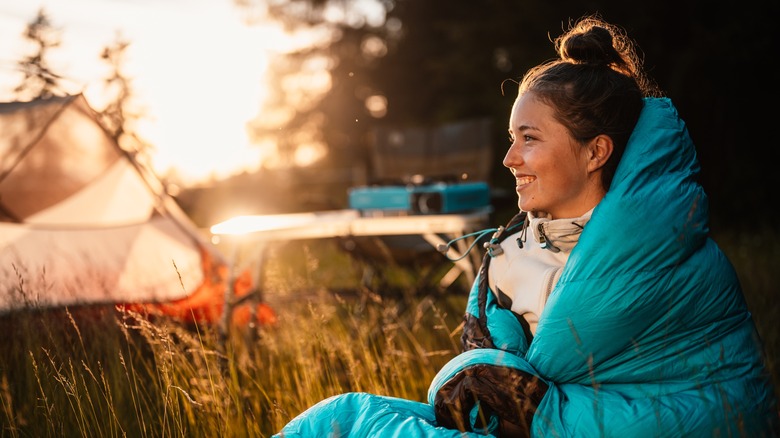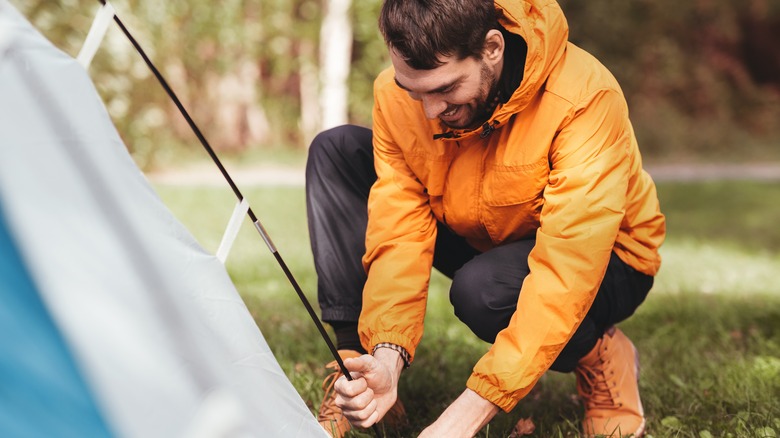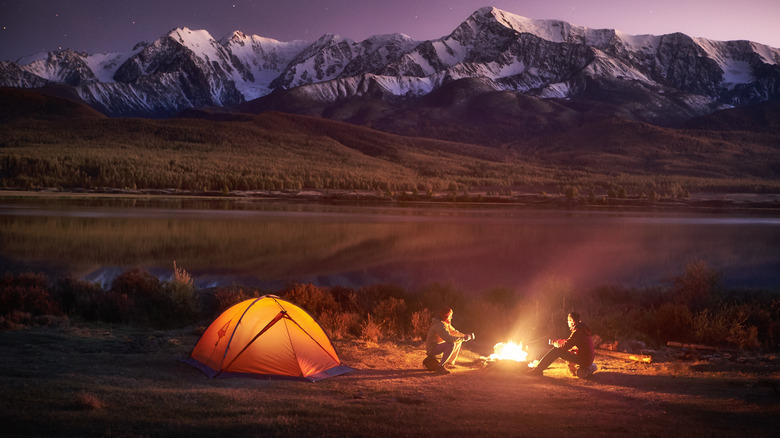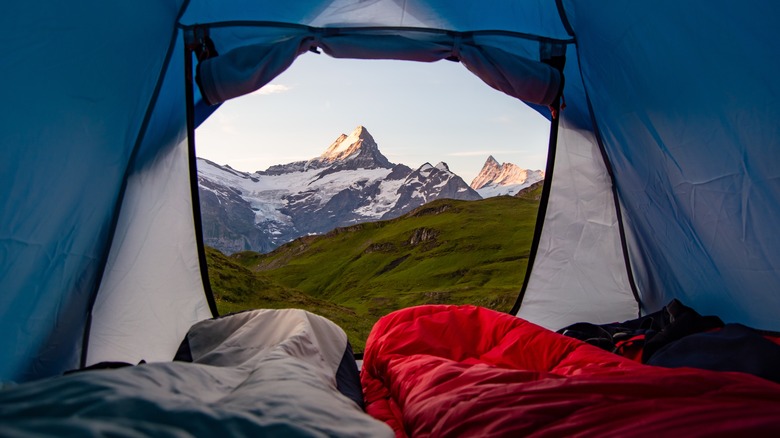Tips For Keeping Warm In Your Tent When Camping
Comfortably sleeping (or being comfortable enough to sleep) should always be a camping priority. If you're unable to get quality shuteye while camping, you'll struggle mightily during the day, especially if you're on a wilderness adventure or hiking trip. Unlike a hotel stay, you're not afforded the luxury of recouping by the pool or pulling shut the blackout curtains.
When camping, a bad night's sleep typically translates into a grueling next day, and when the temperature drops with the sun, you'll need to stay warm overnight. We should mention that staying warm while camping isn't only a consideration during the winter months. Depending on the season, location, altitude, and wind, the temperature between day and night may vary dramatically.
To help explain how to stay warm in a tent, we've broken our seven tips into three sections: tips for preparing your tent for the overnight cold, tips for warming up your body before sleeping, and tips for sleeping warmly throughout the night.
Tips for preparing a warm tent
Unless you're camping during the winter or in an arctic climate, which requires four-season tents, you'll probably use a three-season tent. These tents are generally lighter but still durable enough to protect you from rain, bugs, wind, or a dusting of snow. While these types of tents come in various sizes and configurations, remember that the larger the tent, the harder it'll be to keep warm.
The first tip for properly preparing your tent is to insulate it. You can do this by utilizing your fly sheet and purchasing a camping tarp to lay underneath your tent. Your tent's fly sheets help to prevent moisture, including rain and dew, from entering the tent, while the extra tarp underneath the tent helps to insulate you from the cold ground.
While it may sound counter-intuitive when considering heat conservation, our next tip is properly ventilating your tent. While you sleep, your breath turns into water vapor, and without proper ventilation, the tent will become damp with condensation. To stay warm, you'll need to keep dry. Open a small vent or window on your tent to allow for air circulation, or if nothing else, slightly unzip your tent door.
Tips for preparing for a warm night's sleep
Now that your tent is properly insulated with ventilation, the next tips for how to stay warm in a tent involve what you do before sleeping. In short, to help stay warm in your tent, don't try to start sleeping while you're cold. Before trying to sleep, our first tip is to eat a warm meal and participate in the time-honored tradition of sitting around a campfire. A few jumping jacks may also help to get your core temperature up before settling down.
Our second tip is to wear sleep-specific clothes. If you're hiking, backpacking, or doing anything strenuous during the day, your clothes will probably get pretty sweaty. Even a little dampness can cause serious chill once it gets cold. Again, to stay warm, you need to stay dry. Once you're in sleeping clothes, don't hesitate to start layering up for the night, either. Once you're cold, it takes a lot longer to warm up and stay warm.
Tips for staying warm while you sleep
Your tent is now properly set up, you're warm, and you're ready to sleep through the night. Since the temperatures may continue to drop, you'll need to ensure you stay warm while you sleep. To do so, our first tip is to invest in a high-quality sleeping bag. In most cases, quality sleeping bags receive temperature ratings: a comfort rating for women and a lower-limit rating for men.
The difference in the two ratings is due to the assumption that men typically sleep warmer than women. Regardless, the temperature rating is designed to estimate the lowest temperature it can be outside for someone to sleep comfortably in the bag. The lower the temperature, the warmer the sleeping bag.
Finally, our last tip really depends on how cold it actually is. But for added insulation, consider placing a sleeping pad underneath your sleeping bag. Much like the tarp underneath the tent, this added insulation will further separate you from the cold ground. Sleeping pads receive R-values, and the higher the R-value, the more insulation it offers.
Along with these six tips, our bonus tip is to wear appropriate clothing. Everything from wicking pajamas and thermal long-johns to wool socks and warm beanies can all help ensure you stay bundled and cozy. Just remember to pack in layers. Once you start hiking again after a good night's rest, you'll start to warm back up quickly.



